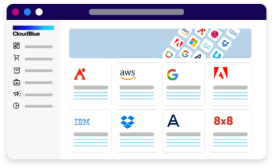Configuration management refers to the process of handling changes systematically to ensure that a system’s performance and integrity are maintained over time. In the world of software, this means tracking and controlling every aspect of software configuration, from versioning to updating. In SaaS environments, where cloud-based software systems are regularly updated and adapted to meet customer needs, configuration management ensures that all system settings, databases, and configurations are consistent and reliable.
At its core, configuration management helps organizations avoid issues like misconfigurations, which can lead to downtime, security vulnerabilities, or degraded system performance. It’s essentially a plan for maintaining order and control over system configurations, ensuring everything is in place for smooth operation.
How Configuration Management Works
Configuration management often involves using specialized tools that allow IT teams to automate, monitor, and manage configurations across different environments. Whether you’re managing an SQL database in a cloud environment or updating a complex SaaS application, these tools help keep everything organized and streamlined. They maintain records of configurations in a centralized repository, often referred to as a configuration management database (CMDB).
A typical process may start with creating a baseline configuration. From there, any updates or changes are documented and tracked, so nothing is missed, and issues can be rolled back if necessary. With a proper system in place, teams can quickly revert to stable configurations if an update causes problems. This also improves collaboration across teams by providing a single, clear view of how software or a system is configured at any given time.
The Importance of Configuration Management in SaaS
For SaaS companies, effective configuration management is essential to maintaining the reliability and security of their offerings. Since SaaS products are frequently updated and customized, keeping a close eye on configurations ensures that updates do not inadvertently disrupt service or expose vulnerabilities. Tools like cloud-based consoles allow administrators to manage these configurations seamlessly across multiple environments.
Configuration management also plays a key role in maintaining compliance with security standards. By having an automated, well-documented configuration system, organizations can easily identify any deviations from security protocols and correct them quickly. This provides an extra layer of defense against potential threats, keeping both systems and customer data secure.













